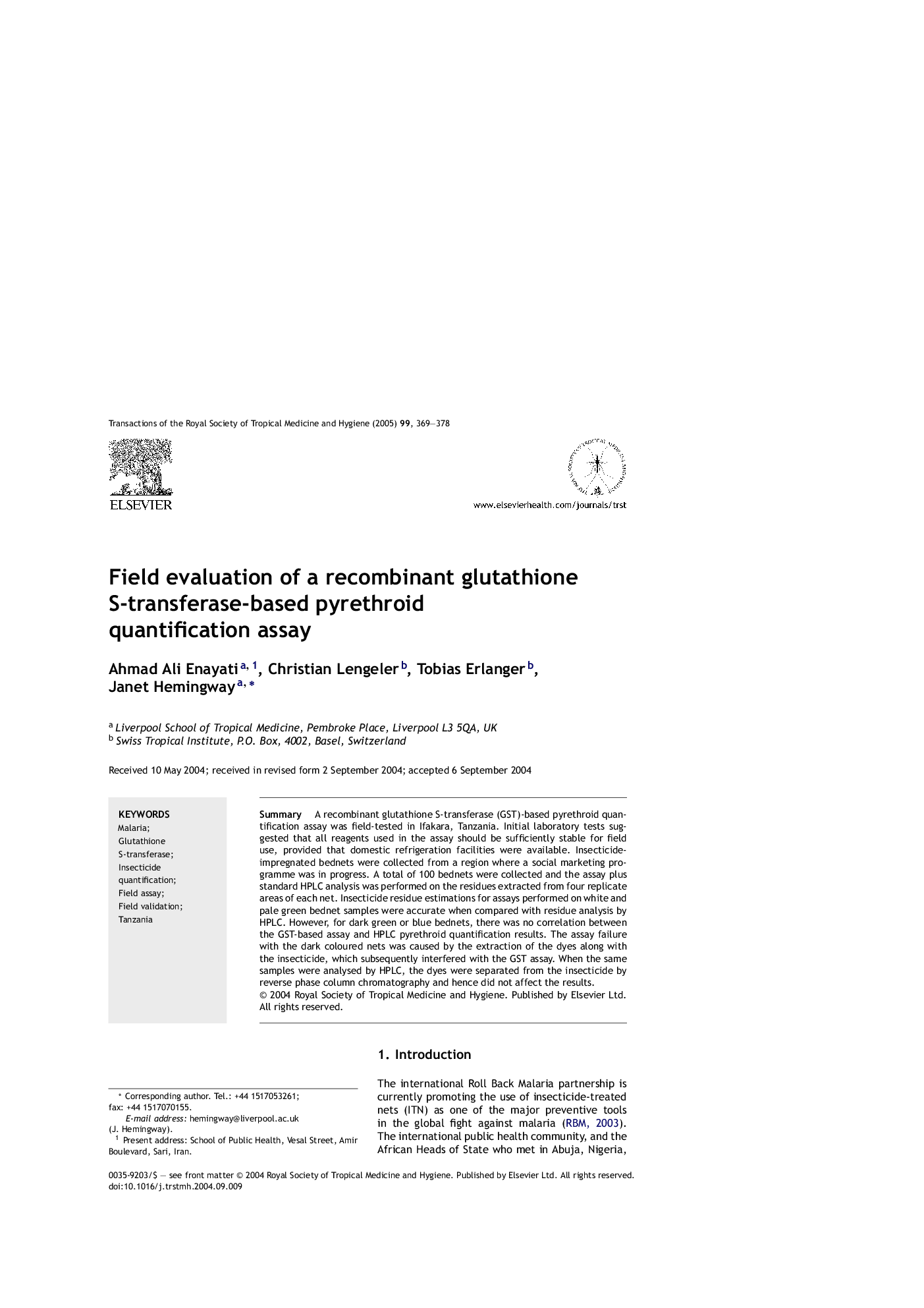| Article ID | Journal | Published Year | Pages | File Type |
|---|---|---|---|---|
| 10030591 | Transactions of the Royal Society of Tropical Medicine and Hygiene | 2005 | 10 Pages |
Abstract
A recombinant glutathione S-transferase (GST)-based pyrethroid quantification assay was field-tested in Ifakara, Tanzania. Initial laboratory tests suggested that all reagents used in the assay should be sufficiently stable for field use, provided that domestic refrigeration facilities were available. Insecticide-impregnated bednets were collected from a region where a social marketing programme was in progress. A total of 100 bednets were collected and the assay plus standard HPLC analysis was performed on the residues extracted from four replicate areas of each net. Insecticide residue estimations for assays performed on white and pale green bednet samples were accurate when compared with residue analysis by HPLC. However, for dark green or blue bednets, there was no correlation between the GST-based assay and HPLC pyrethroid quantification results. The assay failure with the dark coloured nets was caused by the extraction of the dyes along with the insecticide, which subsequently interfered with the GST assay. When the same samples were analysed by HPLC, the dyes were separated from the insecticide by reverse phase column chromatography and hence did not affect the results.
Related Topics
Life Sciences
Immunology and Microbiology
Applied Microbiology and Biotechnology
Authors
Ahmad Ali Enayati, Christian Lengeler, Tobias Erlanger, Janet Hemingway,
